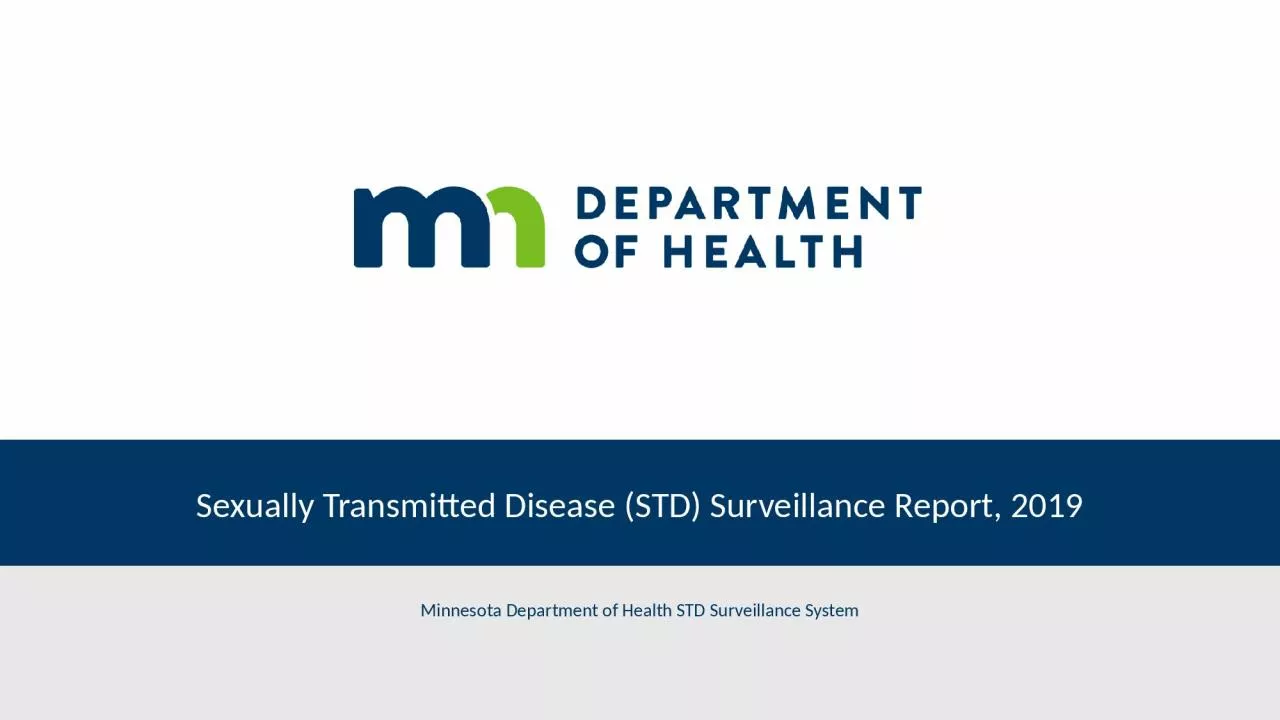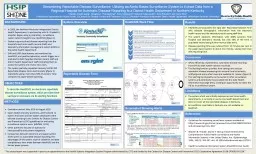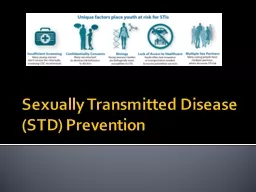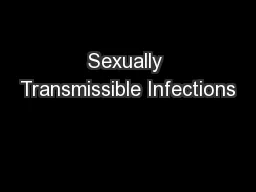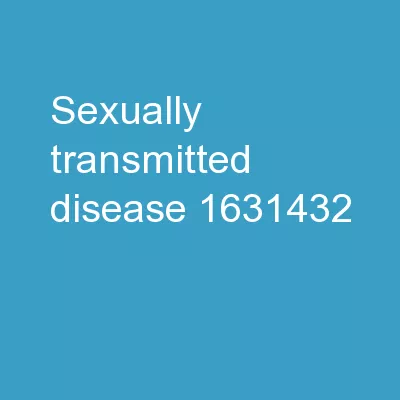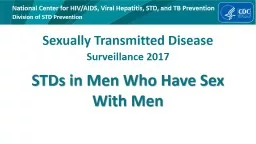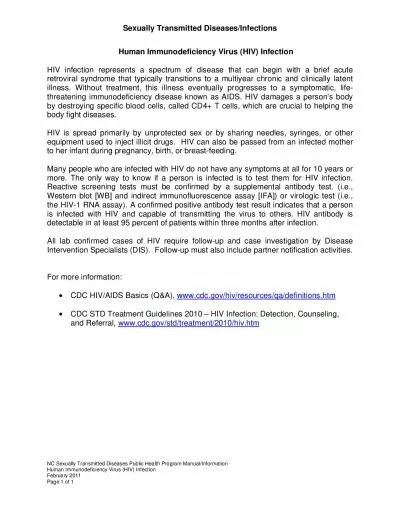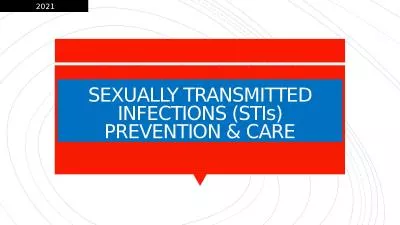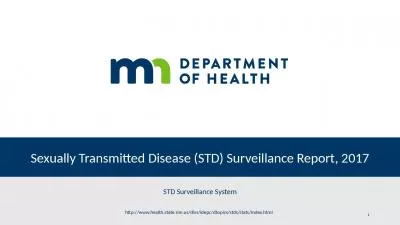PPT-Sexually Transmitted Disease (STD) Surveillance Report, 2019
Author : BabyDolly | Published Date : 2022-08-01
Minnesota Department of Health STD Surveillance System STDs in Minnesota Rate per 100000 by Year of Diagnosis 20092019 STDs in Minnesota Number of Cases Reported
Presentation Embed Code
Download Presentation
Download Presentation The PPT/PDF document "Sexually Transmitted Disease (STD) Surve..." is the property of its rightful owner. Permission is granted to download and print the materials on this website for personal, non-commercial use only, and to display it on your personal computer provided you do not modify the materials and that you retain all copyright notices contained in the materials. By downloading content from our website, you accept the terms of this agreement.
Sexually Transmitted Disease (STD) Surveillance Report, 2019: Transcript
Minnesota Department of Health STD Surveillance System STDs in Minnesota Rate per 100000 by Year of Diagnosis 20092019 STDs in Minnesota Number of Cases Reported in 2019 Total of 32983 STD cases reported to MDH in 2019. Some health effects caused by HPV can be prevented with vaccines What is HPV HPV is the most common sexually transmitted infection STI HPV is a different virus than HIV and HSV herpes HPV is so common that nearly all sexually active men and women g Networks. Presented by:. Johnnie Hancock. Agilent Technologies. 2. Objectives. Learn how to quickly verify the electrical/physical layer input and output characteristics of MIL-STD 1553 differential serial buses using a Digital Storage Oscilloscope (DSO) with MIL-STD 1553 bus decoding and triggering capability.. Regional . Hospital for Automatic Disease Reporting to a District Health Department in Northern Kentucky . Ekaette . Joseph-Isang¹, . Douglas A. . Thoroughman², . Kelly . Giesbrecht³, . Marzieh . Hatamzadeh. Can you solve this puzzle?. A man is trapped in a room which is completely bare except for a fire alarm which could have been used to draw attention to his plight if it were not for the fact that the fire alarm’s cable had been cut leaving two lengths of cable dangling from the ceiling. If he can bring the ends of the cables together, he could repair the connection and raise the alarm. Unfortunately, the cables are situated so that he cannot reach one cable while still holding the other. He only has the resources you would normally expect to find in a pocket. How does he solve the problem?. Tony . Serino, Ph.D.. Female Repro.: Topic Objectives. Be able to identify all anatomical structures of the female and their functions.. Be able to identify the parts of a human ovum and its outer layers with their functions.. 2017. Sexually Transmitted Infections. Key Messages. Sex should be a positive experience.. STIs are a possibility when engaging in sexual activity.. STIs can be spread via:. Skin to skin contact. Oral, anal or vaginal sex. Surveillance . 2017. Division . of STD Prevention . Gonorrhea. Gonorrhea — Rates of Reported Cases by Year, United States, . 1941–2017. NOTE: . Data collection for gonorrhea began in 1941; however, gonorrhea became nationally notifiable in 1944. Refer to the National Notifiable Disease Surveillance System (NNDSS) website for more information: . DISEASES. THE TRUTH. HUMAN PAPILLOMAVIRUSES (HPV). a sexually transmitted disease (STD) that is caused by human papillomavirus (HPV). . Human . papillomavirus is the name of a group of viruses that includes more than 100 different strains or types. . Surveillance . 2017. Division . of STD Prevention . STDs in Men Who . H. ave Sex With Men. Primary and Secondary Syphilis — Estimated Rates of Reported Cases Among MSM by State, United States, 2017. Atlas Pacific Medical consults and performs STD/HIV tests in Singapore. Our experienced male and female doctors will give you expert advice on the symptoms that you may be having, and provide a treatment plan for you. Visit: https://atlaspacificmedical.com/ Created by: School Health Team. Created: June 2022. Recommended for Grades 7-12. Class Overview. . Consent . Sexually Transmitted Infections (STI) . Prevention. Testing. Where to go for help. Consent. chronic and clinically latent illness. Without treatment, this illness eventually progresses to a symptomatic, life-threatening immunodeficiency disease known as AIDS. HIV damages a person’s body 2021. DEFINITION . Sexually transmitted infections (STIs) are infections caused by bacteria, viruses & parasites transmitted through sexual contact, including vaginal, anal & oral sex. Some STIs are transmitted through skin-to-skin sexual contact or through non-sexual means e.g. from mother to child during pregnancy & childbirth.. STD . Surveillance System. 1. http://www.health.state.mn.us/divs/idepc/dtopics/stds/stats/index.html. Introduction 1/2. Under Minnesota law, physicians and laboratories must report all laboratory-confirmed cases of chlamydia, gonorrhea, syphilis, and chancroid to the Minnesota Department of Health (MDH) within one working day..
Download Document
Here is the link to download the presentation.
"Sexually Transmitted Disease (STD) Surveillance Report, 2019"The content belongs to its owner. You may download and print it for personal use, without modification, and keep all copyright notices. By downloading, you agree to these terms.
Related Documents

